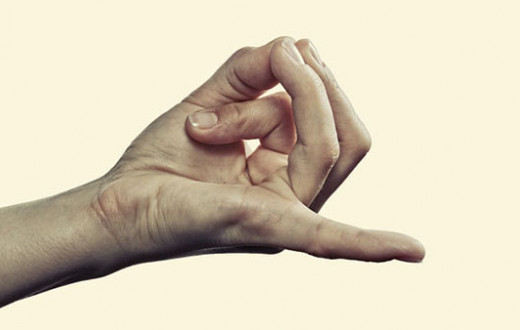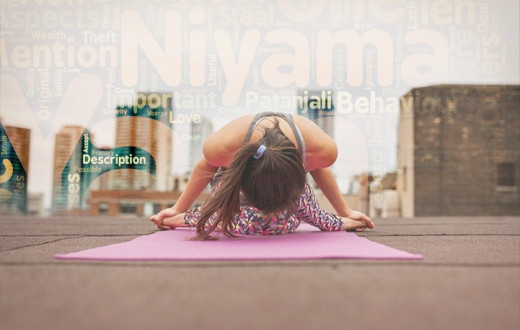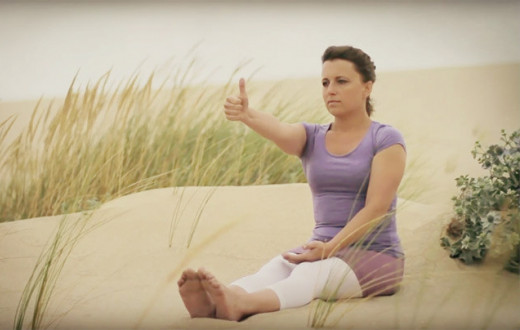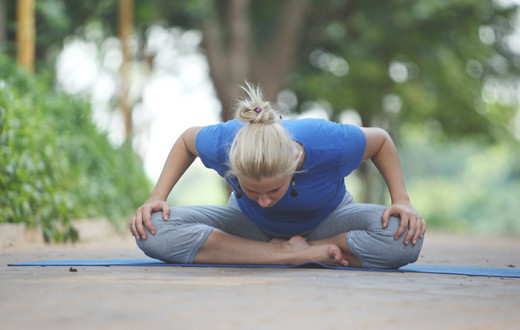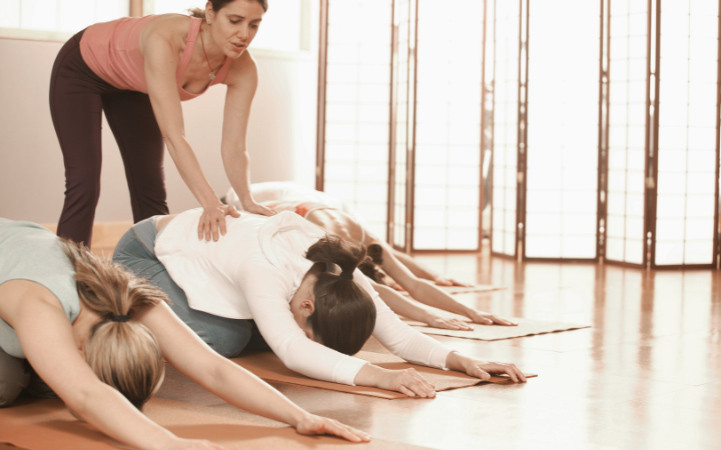
Unless you have tailbone pain, the tailbone, or the coccyx, is something you probably haven’t given much thought to. Or perhaps, you thought of it as an unimportant part of the body, especially given that humans do not have tails. However, research shows that the tailbone is an important weight-bearing support to the body in a sitting position.
When you experience coccyx pain while sitting or standing, you may have injured your tailbone or some of the surrounding muscles and/or ligaments, or there might simply be inflammation. Either way, it isn’t easy to carry on with your daily activities with all that nagging pain in the rear region.
Depending on how severe the tailbone pain is and how long you have been in pain, it’s a good idea to get a medical professional to check it out before you start a yoga routine. But if you know how you strained your tailbone and the pain isn’t too debilitating, yoga can help you feel better right now! Yoga can also help you avoid some types of tailbone pain, to begin with.
Let’s find out more about tailbone pain and how you can get some relief from it as soon as today.
Where is the tailbone?
The last bone in the spinal cord is called the tailbone. Animals can use these bones to move their tails, which helps them attain balance. In humans, these bones are partially fused. Tailbone pain is referred to as coccydynia.
What causes tailbone pain?

How did you get tailbone pain? Here are a few possible causes:
- An injury like a fall
- Vaginal childbirth
- Prolonged sitting on hard surfaces
- Degenerative joint changes
- Sciatica
- Improper posture (puts undue pressure on the tailbone)
- Running on uneven surfaces
Any sort of weight on the tailbone will increase pain, which is why you should change positions often to relieve pain and pressure from the region.
What are the symptoms of coccydynia?
Coccydynia is largely a localized pain. You feel pain and tenderness in the seat of the body. It normally doesn’t have shooting pain extending to the legs like sciatica. However, you might find some activities painful like sitting in one position for a long period of time, cycling, and driving.
While it is advisable to change positions often, changing positions from sitting to standing might also cause pain. It could even affect your bowel movements given the proximity of the tailbone to the excretory organs.
What should you do to get relief from tailbone pain?

Common treatments for tailbone pain include resting, icing the area, using a gel donut for sitting, and medication. While medication can help ease pain, barring any fractures, a more long-term solution to relieve tailbone pain would be yoga asanas.
With yoga’s simple stretches and bends, it exercises your back and tailbone muscles helping you to be more flexible while strengthening the area. In addition to yoga poses, here are a few quick tips you can try.
Quick tips for relief from tailbone pain
- Avoid prolonged sitting – whether it is in front of your laptop or behind the wheel. Change positions often.
- Avoid hard surfaces like wooden benches and metal chairs, as well as narrow surfaces.
- Use a well-padded seat or a gel donut-shaped cushion for support when sitting.
- Consider keeping your feet on a low stool to take some pressure off your rear when sitting.
- Apply hot and cold packs two to three times a day for relief from tailbone pain.
- Avoid heavy physical activity like running and jumping.
- You can try water aerobics and swimming to help relieve pain in the tailbone.
Now let’s see which yoga asanas can help prevent persistent tailbone pain.
Yoga poses for tailbone pain relief
More often than not, weakness in one part of the body leads to pain in another part. Yoga can help strengthen the back and hips, making them strong enough to bear the weight of your body and taking pressure off your tailbone area.
These tailbone pain exercises do not put undue pressure on the lumbar spine or coccyx. If at any point you feel an increase in tailbone pain, stop and call your doctor or chiropractor.
1. Child’s pose

Benefits:
- Opens and stretches the hips, back, and thighs, which relieves pain in the tailbone
- Relaxes the entire spine, easing tense muscles
Aim: Stretch your hands forward as much as you can and maintain the pose for about 5-10 seconds, or as you find comfortable.
Tip: You can start from Cat-Cow pose and move the rear region backward if that is more comfortable for you at this time.
2. Bow pose

Benefits:
- Strengthens and flexes both the back muscles and glute muscles
- Opens the hip muscles, making them more supple and providing better support to the tailbone
- Tones and strengthens the leg muscles, making them better able to support body weight
Aim: Maintain the pose for as long as you are comfortable.
Tip: If lifting your thighs and legs off the ground is uncomfortable, just hold on to your ankles. With time and practice, when your body becomes stronger and more flexible, you can try to achieve the posture and maintain it for a longer time.
3. Cobra pose

Benefits:
- Strengthens the spine and supporting muscles
- Aids in smoother bowel movements, preventing constipation, which is helpful, as tailbone pain can adversely affect bowel movement
Aim: Bend backward as much as you can with your head turned upwards, as this can relieve tension and pain from the entire upper body.
Tips:
- Ensure that you bend evenly along the entire length of the spine
- Support your upper body with your elbows rather than your hands at first, if that is more comfortable for you
- Raise your body over time with practice
4. Wind-Relieving pose

Benefits:
- Helps flex your back and hip muscles
- Loosens tightness in the lower back
- Gives temporary relief for the tailbone from supporting body weight
Aim: Maintain the pose for as long as you are comfortable; the bend will relieve severe pain and weariness.
Tip: If you are not comfortable with this pose, try this variation:
- Lie on your back and straighten your legs with the back of your knees touching the ground and inhale
- Exhale and bring your knees (only one knee if that is more comfortable) gently to your chest (ensure that your back is flat on the ground)
- Keep your knees bent for 10 seconds while taking slow and deep breaths
- Exhale and release your legs regaining your original position
- Repeat five times or as much as you find comfortable
5. Superman pose

Benefits:
- Strengthens the pelvic region, relieving tailbone pain
- Strengthens weak back muscles
Aim: Your head should be in line with your spine – in a neutral position. Maintain the pose for five seconds at a time or as much as you are comfortable.
Tips:
- Ensure your neck is not strained
- You can start with locust pose in case superman pose is too strenuous
6. Bridge pose
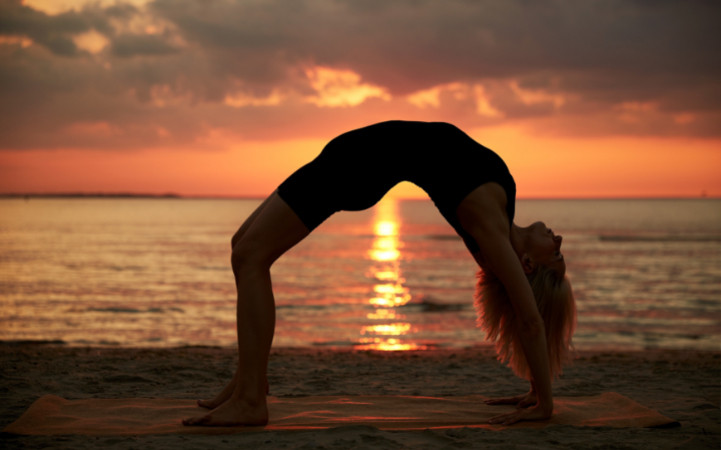
Benefits:
- Strengthens the lower back muscles, enabling them to be a better support to the tailbone in terms of bearing body weight
- Offers temporary relief to the tailbone as weight is taken off it
Aim: Align your back, tailbone, and thighs in a straight line and maintain bridge pose for about ten seconds, gradually increasing the length of the pose.
Tip: Support your tailbone region with your hands if that is soothing.
7. Downward-facing dog pose

Benefits:
- Strengthens the shoulders, arms, thighs, legs, and spine, making the body better equipped to handle pain
- Makes the back and adjoining muscles more supple, allowing the rear region to get a good stretch
Aim: Press the heels downwards towards the floor, touching it if possible. This will shift weight off the back and tail region relieving it of pain.
Tip: Try some basic warm-up yoga exercises for the limbs will help you maintain the pose more easily.
Performing specific stretches will give your body the required stretch, bend, and twist that it may have been missing. Please note that these yoga poses must be done seamlessly, allowing your body to stretch effortlessly and comfortably. They just might be the solution you were looking for, giving you freedom from tailbone pain.
Other helpful yoga poses to relieve tailbone pain are the triangle pose, pigeon pose (hip flexors), angle pose, and side angle pose. You can explore our entire library of yoga poses for these and many other yoga asanas.
If you would like support in learning how to properly perform these and other yoga postures, check out our online yoga studio.
Important note: Practicing yoga helps develop the body and mind, yet it is not a substitute for medicine.
Bonus tip: Yoga works best when followed by breathing and meditation
SKY Breath Meditation is a technique that utilizes the breath for deep meditation. SKY is also helpful with pain management and only takes 10-20 minutes a day to practice. To learn more about SKY, join our free introductory session today!

Written with inputs from Pramod Timsinaa, Faculty, Sri Sri School of Yoga
Disclaimer: This content on the Art of Living Blog is not intended to be a substitute for professional medical advice, diagnosis or treatment. Always seek the advice of your physician or other qualified health providers with any questions you may have regarding a medical condition. Any links to third-party websites are provided as a convenience only and the Art of Living Blog is not responsible for their content.




